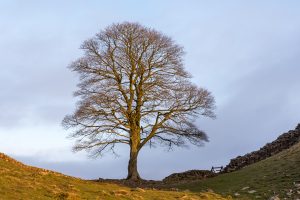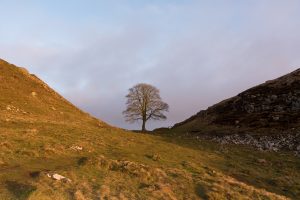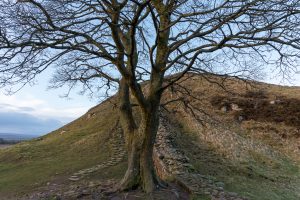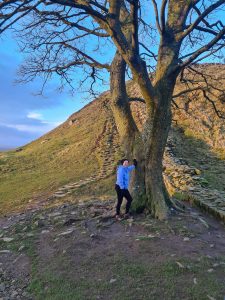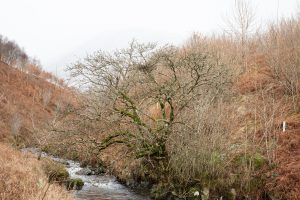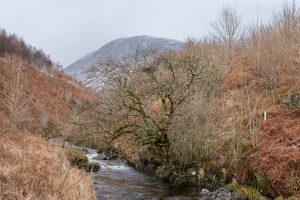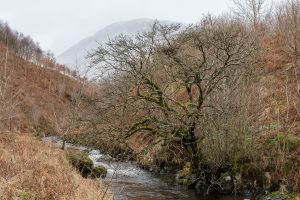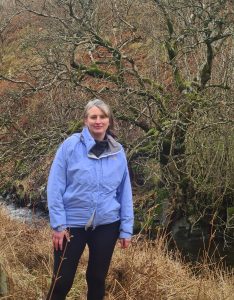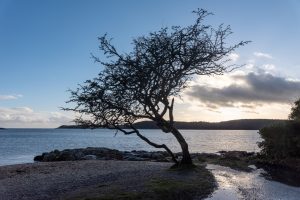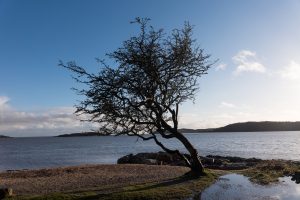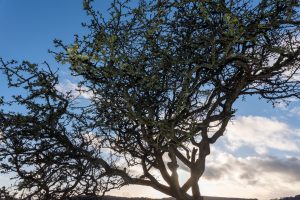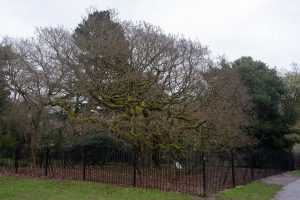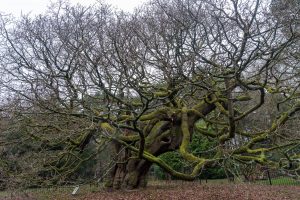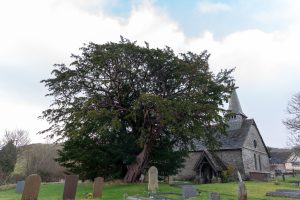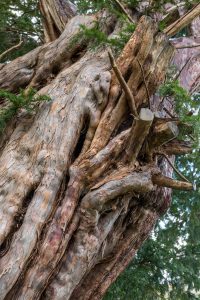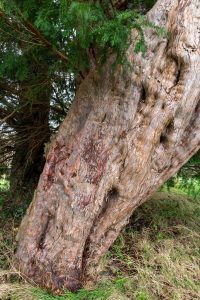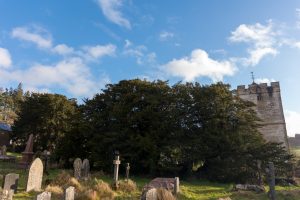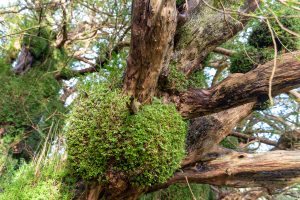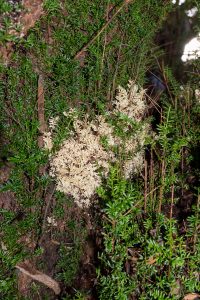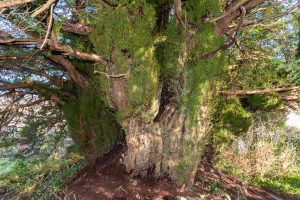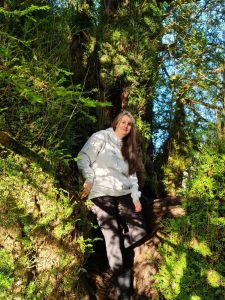Journal
Sycamore Gap
“The Sycamore Gap is an iconic ‘dip’ in the landscape and has a lone Sycamore tree that grows in the foundations of the Roman wall in Northumberland National Park”.
Tree Type: Sycamore (Acer Pseudoplatanus)
Age: 300+ years
Girth: Between 3 and 4.26 Metres
Height: Up to 175 Feet
The tree was originally used as a boundary marker between Scotland and England. It was also used within the film, Robin Hood Prince of Thieves with Kevin Costner.
Leaving on the evening of 3rd February at 17.00 we drove through the night, making our way up to Sycamore Gap near Hexham in Northumberland. This was a spontaneous decision which was regrettable having nowhere to stay, the decision to put in a provision of warm blankets was a good one as it took nine hours to get to our destination and would mean we were sleeping in the car from 03:00 ready for first light. Packed in the car were all the appropriate clothing, footwear, camera equipment, additional lenses and a tripod. The journey was extremely long and the weather became colder the further north we travelled.
Whilst researching Sycamore Gap and its location being on the boundary of Northumberland and Scotland it was noted the weather could change extremely quickly as it was in the middle of nowhere and in the mountains.
After a short sleep in the car, around 06:30 it began to get light, so we set off to find the tree. The sat nav had issues finding the correct location and we had to pull over and ask somebody who had something of an idea of where it was that we were heading. Eventually, we managed to find the car park to park up and then walked from there to find the tree. To access the tree you had to walk down several pathways and after around thirty minutes of walking in quite a rough terrain and by Hadrian’s Wall, we found it. The weather changed several times, including flurries of light snow, whilst we walked in some beautiful countryside.
This tree is completely alone, with no others around it. Beyond the wall, you can see snow-capped mountains. It stands in a gap of two hills beside Hadrian’s wall. There was quite a lot of shadow and the weather turned very quickly, as we had been warned in advance.. Although it was really cold, the sun did come out at one point so I had to be mindful of the shadows and the position of the sun.
The photographs were taken fully manually (See caption in photographs) and a tripod was used.
To capture the photograph I wanted I had to position myself so the tree was behind the wall and the snowy-capped mountains were in the distance. It was so cold that my hands were going blue, I could only take my gloves off for a short time as my fingers quickly became numb.
It took around an hour to take the photos.
I took some photographs further away and some closer up. By shooting from further away, I was able to include both sides of the hill. When I went closer in, I also took some photos that incorporated the wall. Despite there not being the complete tree, I like the photo with the wall. To me, it talks about boundaries.
The Survivor Tree
“Where one tree survives, a million trees will grow,” on a lone rowan clinging to a stream bank in Carrifran Valley. Today that survivor tree is lonely no more!
(The Survivor Tree, 2022)
Tree Type: Rowan/Mountain Ash (Sorbus Aucuparia)
Age: Between 70 and 100 years
Girth: Unknown
Height: Unknown
Leaving Sycamore Gap at 09.30 we travelled further up North to Scotland to visit The Survivor Tree, Moffatt, Scotland. We decided to get breakfast on the way and needed coffee quite desperately. Eventually, after about two hours we then arrived in Scotland and the weather had completely changed again. It was changing between snow and rain and you could see the landscape changing. Initially, when I had researched the tree, it was down a ravine and a valley but you had to have a drone to get to it, so I was a little concerned about the location.
Arriving in the area and the sat nav was not working properly and it was sending us in circles. We decided to pull over to a petrol station and asked for directions, and a local lady gave us directions. Unfortunately with the weather worsening, incorrect directions from someone and the sat nav taking us ten miles out of our way we were going to give up. Pulling to the side of the road was a driver of a snowplough and speaking to him we were advised, the further into the mountains that we went you could draw a line in the snow across the road, so it became too dangerous and changeable.
Heading back the way we came we felt disappointed that no one knew where this tree was and we felt we had had a wasted journey to the tree that no one had heard of. I looked on Google when the signal was available and found where I thought it might be. As we were driving back, there was a cattle grid with a house just before it. I decided we should ask the people who lived in the house if they knew where the tree was. The gardener was outside and unfortunately could not help us but he told us that the gentleman in the house could help. The elderly gentleman in the house knew where the tree was. None of the previous directions that we were given had been accurate, and as such, we had been looking in the wrong place. The gentleman advised us that the tree was about five minutes away from his house and told us exactly where the tree was. Taking us longer than expected, over three hours to find the tree, it was off the main road and you had to go through some woods to get to it. When we parked up, this tree was in the middle of other trees on a bank and by a river. There was a man with a dog who confirmed it was indeed the survivor tree, honestly, I leap with joy!
The photographs were taken fully manually (See caption in photographs) and a tripod was used.
In terms of the lighting conditions, I was racing against time due to the changeable weather. Due to the location of the tree being on a riverbank, I could only capture a shot of the tree further away. In comparison to the other trees, it was small in size. Initially, it had been on its own for a long time and survived there for over one hundred years. As it had been on its own, in the year 2000 the local people began planting trees in the area where the tree was and twenty years later a hundred thousand trees had been replanted. The forestry commission had decided to put a preservation order on it and now as a result of the replanting, it’s no longer alone. I was determined to find this tree as The Survivor Tree was one that I thought brought the project together. Leaving this tree, I held one of its branches and felt emotional. This was because I am a survivor myself. I felt a big connection with this tree and I really felt it was essential for this project.
We left here at around 14:30
The Kippford Hawthorn
“I love this tree, it’s amazing. It is a superb hawthorn and it’s incredible it has survived this well having been climbed on, battered by the winds and even bumped into by cars turning”.
(Dumfries and Galloway hawthorn is UK’s Tree of the Year, 2021)
Tree Type: Hawthorn (Crataegus monogyna)
Age: Between 60 and 100 years
Girth: Up to 8.7 Metres
Height: Up to 10.7 Metres
Continuing on our journey Westwards we finally arrived around 16:00 in Kippford located on the banks of The Solway Firth. It forms part of the border between Cumbria, Dumfries and Galloway. It took quite a while to get there and the weather changed again. The area is in an exposed position despite having residential houses and holiday lets.
After parking up, it completely poured down with rain. At this point before getting out of the car I put my weatherproof cover over my camera to protect it, taking the tripod with me. We then walked for about twenty minutes or more.
The weather conditions were awful to start with downpours of rain and very windy. I was concerned the shoot would be a complete washout if I am honest.
We eventually found the tree which was on its own on a coast, near the edge of the water. As there was a body of water behind the tree, I felt it would create a good backdrop for the photograph. I was careful to choose the position of where I captured the image of the tree from.
The photographs were taken fully manually (See caption in photographs) and a tripod was used.
During the shoot, I had to use the waterproof cover and kept on wiping my lens due to the raindrops on my lens. Eventually, there was a break in the weather and behind the cloud, the sun appeared for a short period of time. I had to adjust my settings accordingly many times. The weather along with lighting conditions were key factors in photographing this tree. I found this tree did not give off as much energy as the other trees that I had come across on my journey.
I would have liked to have been there on a different day when weather conditions were more favourable. Due to its location, this tree could be best photographed at either sunrise or sunset owing to its position on the coast. I was not able to do justice to the tree because of the lighting conditions on the day.
After getting completely drenched again from the rain we made our way to Cumbria in a lovely warm car stopping for a hot cup of tea on the way.
The Allerton Oak
“The huge Allerton Oak is a well known local landmark within Calderstones Park. There are numerous claims made for it including it is a thousand years old; it was the site of a Medieval Hundred Court; it was split by an explosion out on the Mersey; it was used as a symbolic message of hope during the Second World War”.
(A History of the Allerton Oak, Liverpool, 2022)
Tree Type: Irish Oak as known as Sessile Oak (Quercus Petraea)
Age: 1000 years
Girth: 5.5 Metres
Height: Unknown
On the morning of 5th February, we left the overnight accommodation in Asby, Cumbria leaving at approximately 07.30. Doing more research the night before, I had planned to photograph another tree in Buttermere half an hour away however the tree was it was in private land. I could not access it due to reason and therefore did not bother.
Leaving Cumbria at 09:00 we drove to Liverpool, arriving at a Premier Inn in Haydock approximately two hours later. The hope was to get into the accommodation early, however, this was not the case so as tired as we had something to eat and drink and set off to find the Allerton Oak around 13.00. As the weather was dull, gloomy and raining I wore appropriate footwear and a waterproof coat. My camera was packed with additional lenses if needed, a waterproof rain cover and a tripod. This particular tree was situated in Calderstones Park which was close to a residential area with car parking facilities available, a short walking distance from the tree.
The photographs were taken fully manually (See caption in photographs) and a tripod was used.
The Oak was surrounded by a fence due to its immense size and age. There was quite a lot of shadows here and other trees were close by. As the tree was surrounded by a fence I was a little disappointed with the results I got. For this reason, I took some photographs further away and some closer up. I had to use flash despite being outside due to the weather conditions and shadows.
We stayed overnight
The Discoed Yew
“The yew in St Michael’s churchyard is likely to be a remarkable five thousand years old. The Discoed Yew is probably one of the five oldest in the British Isles.”
(The Discoed Yew, n.d.)
Tree Type: Yew (Taxus Baccata)
Age: 5000 years
Girth: 11.3 Metres
Height: Up to 24 Metres
On the morning of 6th February, we left Liverpool making a detour to visit two yew trees. The first of them was The Discoed Yew.
During my research about this tree, I found it to be in a small village, in St Michael’s churchyard.
It was very well maintained and looked after, with no damage, probably because of where it was located. Before visiting the tree, I was not aware of how big the tree was going to be. During the journey to visit the tree the weather changed and became a bit hit-and-miss, cloudy and unpredictable.
On arrival, I found the tree was in the front of the churchyard with the church to the right of me, in quite an exposed area. It was that large that there was a little gap between the tree and the hedge. There were also gravestones under the canopy of the tree nestling in shade therefore they created lots of shadows.
I carried out the photography fully manually (See caption in photographs), using flash when necessary to eliminate shadowing along with a tripod.
I wanted to not just take a standard shot of this tree so I found myself taking other shots as well. These included close-ups, ones with unusual markings and characteristics. The colours of the tree were different shades of greens, browns and rustic reds.
Apart from wanting to hug the tree, I felt that you had to respect the trees.
Continuing on the journey to the next tree.
The Defynnog Yew
“Its bark is so ancient and marbled, it is almost petrified and resembles volcanic stone. Fresh needles and shoots stubble its roots and branches. Tendrils and tresses fling themselves to the ground. Ivy ensnares its base.”
(Walker and Waterson, 2020)
Often a fixture in churchyards today, the yew tree has a history with deep roots. It was held sacred by the Druids, who used their wood to make their wands and staffs because of its supposed powerful magical properties. In the Celtic world the yew was synonymous with longevity and regeneration, death and resurrection, due to its drooping branches that could take root and form new trunks where they touched the ground. Yew trees could also survive the harshest of winters: when all else perished. In fact, a likely etymological origin of ‘yew’ is from the Welsh word ‘ywen’ – who is to say that the word we use for the tree today did not derive from this very evergreen in Defynnog churchyard?
Tree Type: Yew (Taxus Baccata)
Age: Between 5000 and 6000 years
Girth: 6.29 Metres (Section one)
11.5 Metres (Section two)
Height: Up to 24.3 Metres
Following seeing The Discoed Yew, our second Yew Tree was The Defynnog Yew in Sennybridge.
On the journey, the weather was varied with sunshine and showers. I must admit it was lovely to see the sunshine again and it stayed with us during the day! As before I wore appropriate clothing, footwear and a waterproof coat. With my camera, additional lenses, rain cover if needed and tripod.
The journey took approximately ninety minutes to get to the tree.
This Yew tree was again in a church graveyard and a small village in the Brecon Beacons. It was to the side of the church and was signposted within the location. Honestly, at first glance, it was an extremely large tree as before, when you went closer you could see what you may think was another tree growing.
The one part of the tree had a seating area in the trunk and a little further away from this trunk was another part of the tree where new growth was starting to take shape. The gap in between had headstones, graves and tree roots visible on the top of the ground.
After extensive research, it has been noted that the two trees are actually one tree due to DNA being conducted and the tree itself is between 5000 and 6000 years old making it the oldest tree in the United Kingdom. The energy from this tree was incredible and visually it was like a piece of art.
As the tree was so big initially I shot the tree in sections, the trunk, with interesting characteristic markings, then taking shots further away to get the whole image of this magnificent tree.
The photographs were taken fully manually (See caption in photographs) and a tripod was used.
During the shoot, the sun made an appearance and due to the extremely large canopy, it could become very shady in parts. I tried using different techniques trying different ideas such as my positioning and using flash. Some of the ideas worked whilst others did not.

